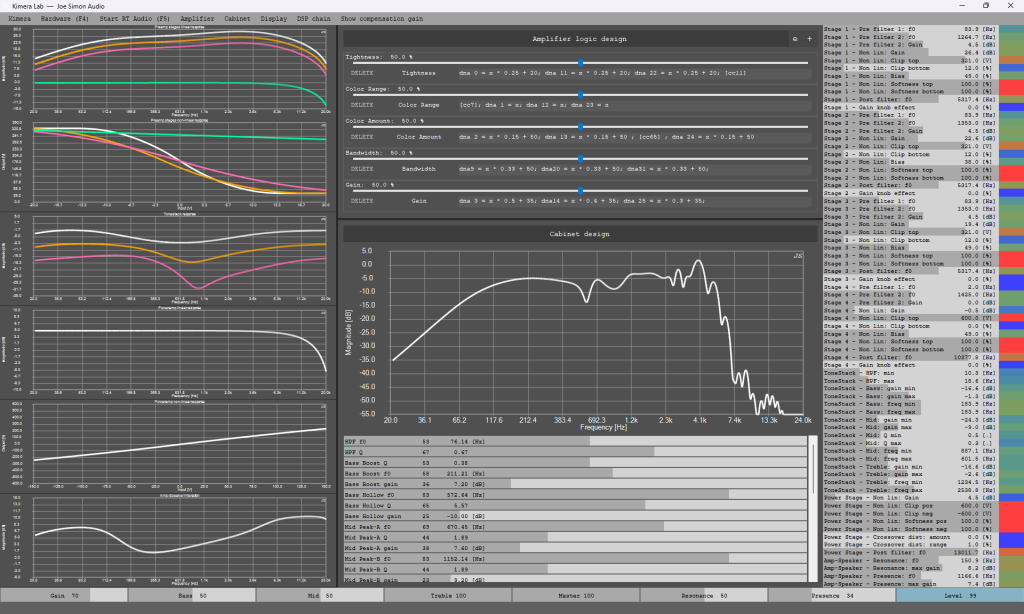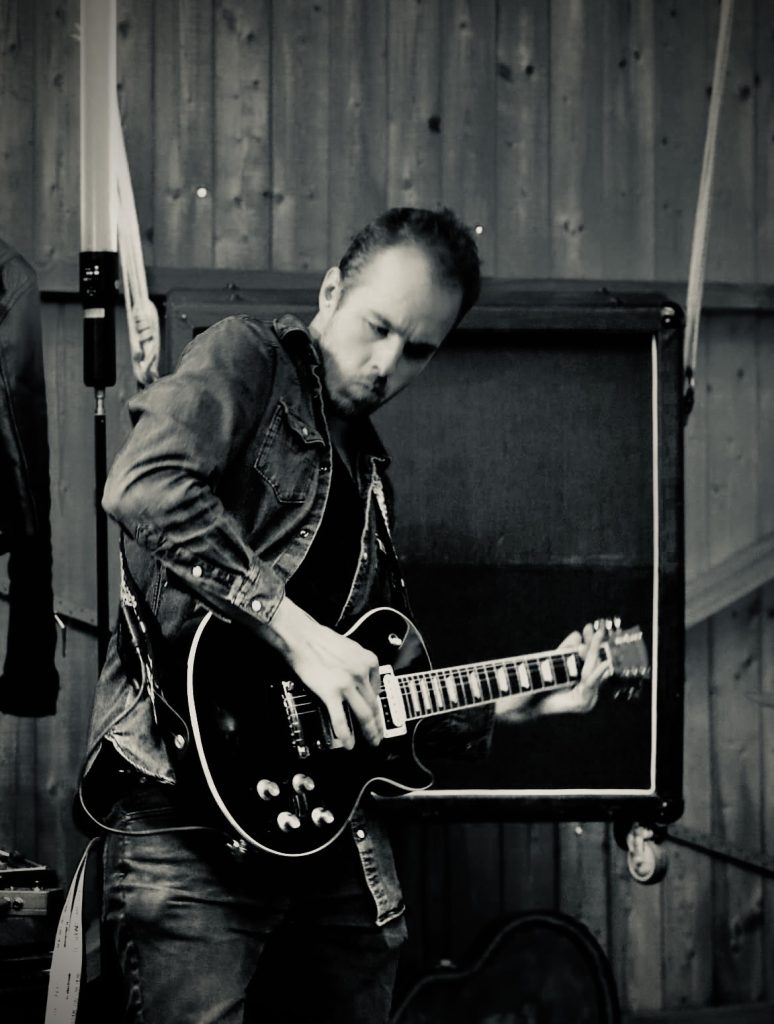
My work sits between analog electronics, digital signal processing, and software engineering, with a strong focus on audio applications. I’ve spent much of my career researching and developing algorithms, models, and tools that connect the analog and digital domains — from detailed vacuum tube and analog circuit models to real-time DSP implementations. I enjoy projects where accuracy, sound quality, and technical depth really matter, whether that means designing a circuit, an algorithm that models it, writing a firmware, or building the custom software needed to make it all come together.
The analog touch and the digital precision.
Although most of what I do is in the audio world, my skills extend naturally into other areas that rely on signal processing, algorithm development, and embedded systems. I’m always interested in projects that have a solid technical foundation and make good use of that mix of analog and digital expertise — whether or not they make sound in the end.

Vacuum Tube Expertise
Few technologies inspire such enduring fascination as the vacuum tube. Over the years, I’ve devoted a substantial part of my research and engineering practice to understanding and extending this classic technology — not just as a nostalgic artifact, but as a living medium for sound and signal processing. From the physics of thermionic emission to the subtleties of harmonic structure, I’ve explored every aspect of tube behavior through both theory and practice. This journey culminated in my book “Introduction to Design with Electron Tubes”, where I distilled the fundamentals of tube operation and amplifier design for a new generation of engineers who want to work from first principles.
Tubes are not magical perfection, but they’re close.
Beyond the theoretical domain, I’ve designed and built tube amplifiers, characterized tubes with custom measurement systems, and developed models for real-time application that accurately reproduce their complex nonlinear behavior for use in audio plug-ins, guitar pedals, and embedded platforms. With my work I’ve closed the circle of modeling the analog domain with digital tools and then using these tools to design back in the analog domain.
Shaping My Approach to Audio R&D
Through my career, I’ve worked across several aspects of audio and signal-processing research — from product development to algorithm design, circuit modeling, and custom tools. My eight years at TC Electronic were a particularly formative period, where I was part of the R&D team focused on pushing the limits of digital modeling and signal processing for musical applications.
During that time, I contributed to the design and implementation of a wide range of products, including the AmpWorx series of pedals, where I worked on advanced digital models of tube amplifiers. I also played a key role in the selection, production, and editing of impulse responses (IRs) for products such as the Impulse pedal, combining technical measurement work with careful listening and refinement. Additionally, I contributed to the firmware development of devices like the Plethora X5, helping integrate DSP features and ensure robust, low-latency performance.
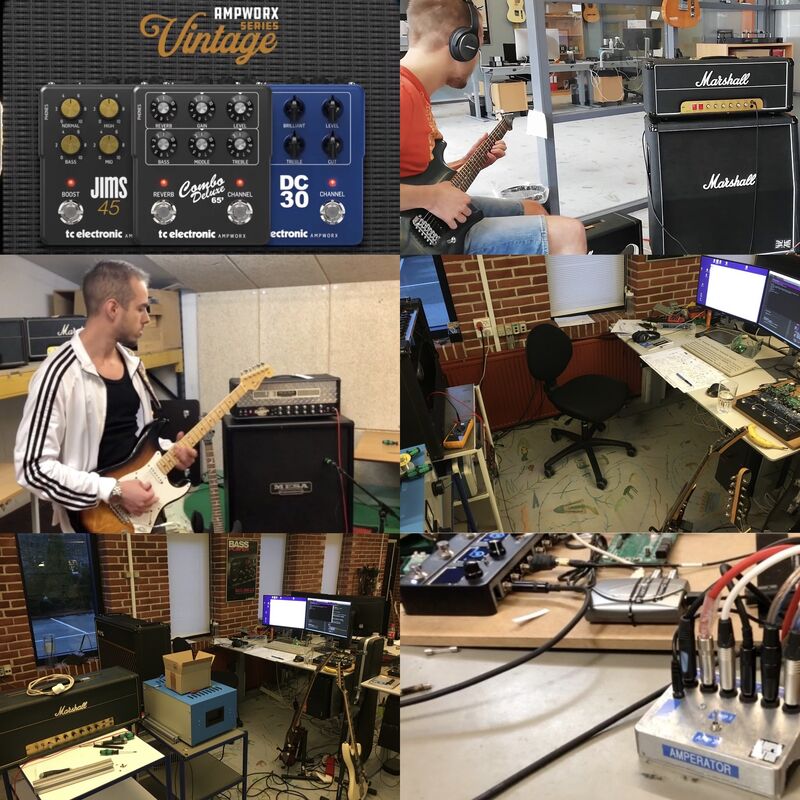
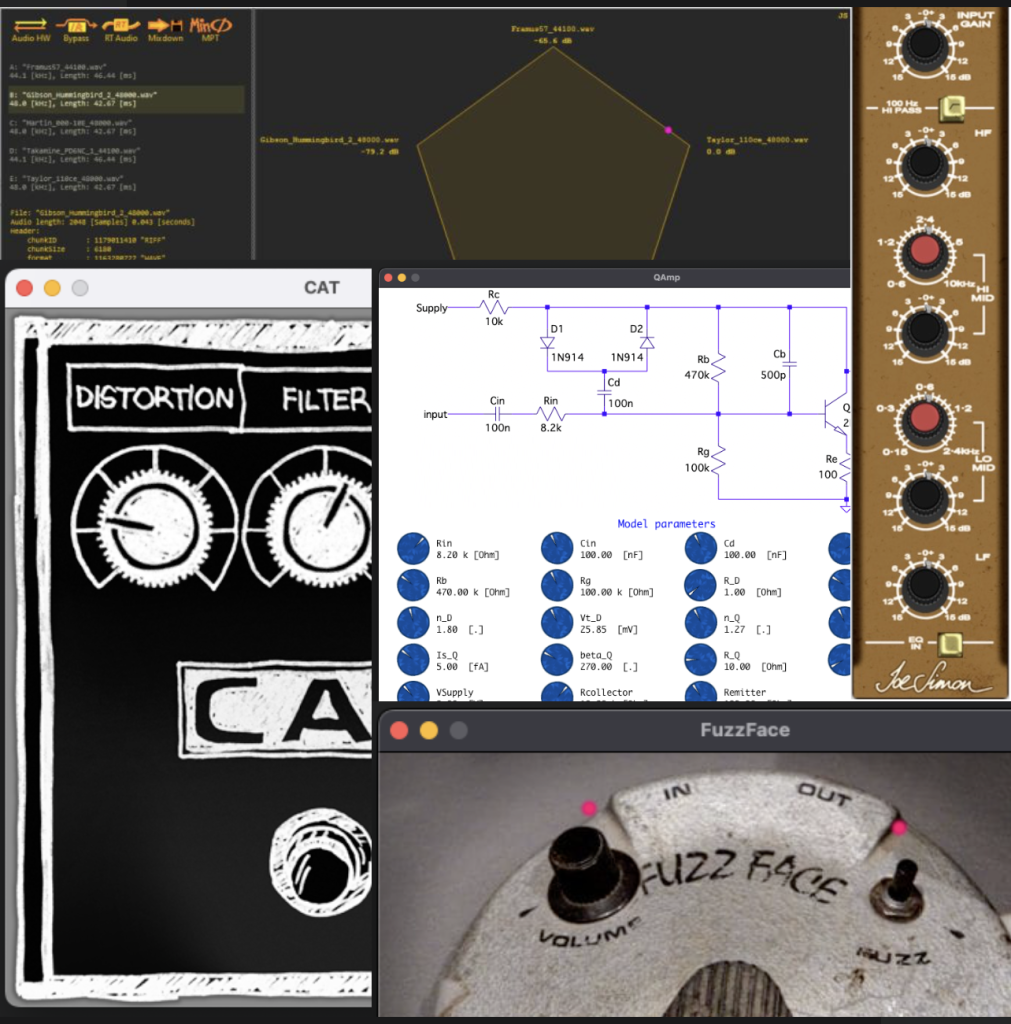
Real-Time Audio Algorithms
Behind every audio product that feels natural and responsive is a piece of DSP engineering designed to make complex processes happen in real time, and that’s where I focus much of my work. Along the way, I’ve developed a range of algorithms for real-time audio processing, from spice-accurate analog-modeling approaches to filters, dynamics processors, cabinet simulations, and tone-shaping systems. My research combines mathematical precision with a strong sense of how things should sound, ensuring that each prototype not only performs well on paper but also holds up under the hands and ears of musicians and audio professionals.
Whether the final product is an audio plugin or an embedded system, I follow a refined process which allows me to do interactive iterative design through the complete R&D cycle. This means that the sound design is allowed and encouraged throughout the project. Only that way it will sound right and feel right.
Signal Domain Lab
Signal Domain Lab is my flagship analog-modeling platform — a Windows application designed to simulate complex analog circuits in real time with SPICE-level accuracy. It grew out of my need for a flexible research tool that could move seamlessly between circuit design, algorithm development, and perceptual evaluation. With Signal Domain Lab, I can explore and fine-tune nonlinear analog behavior interactively, making it possible to “play through” a design and hear the results instantly while monitoring the underlying electrical model.
SPICE-accurate, real-time, and built for discovery.
Unlike traditional circuit simulators, which are either too slow or too cumbersome for iterative work, Signal Domain Lab is optimized for creative and technical exploration. It’s not a consumer product but an engineering lab for virtual analog research — a space where real hardware ideas and digital models can evolve together. The same environment can be used in reverse: to design new analog circuits “in the box” and later translate them into physical prototypes.
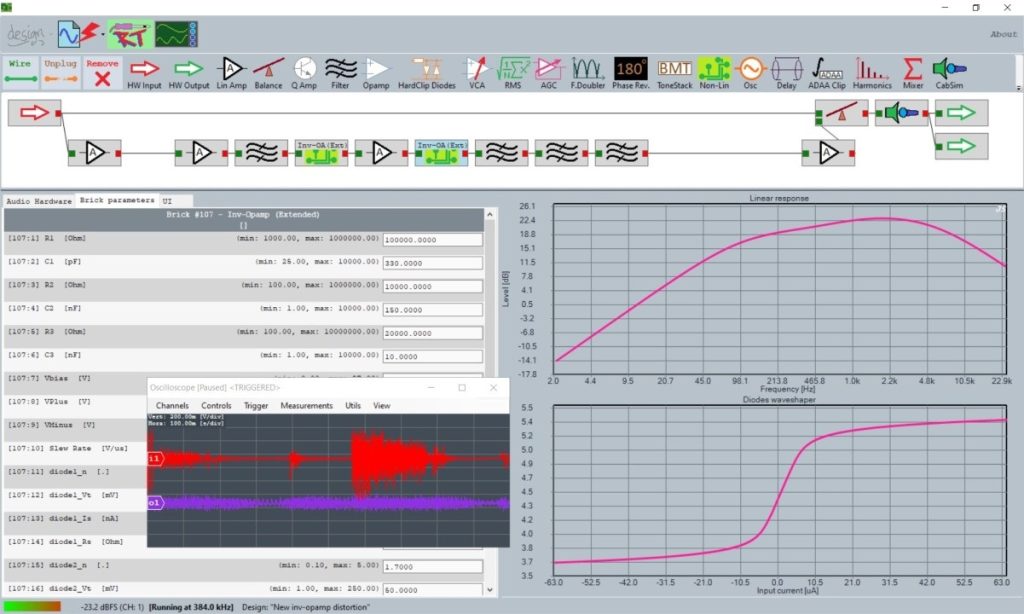
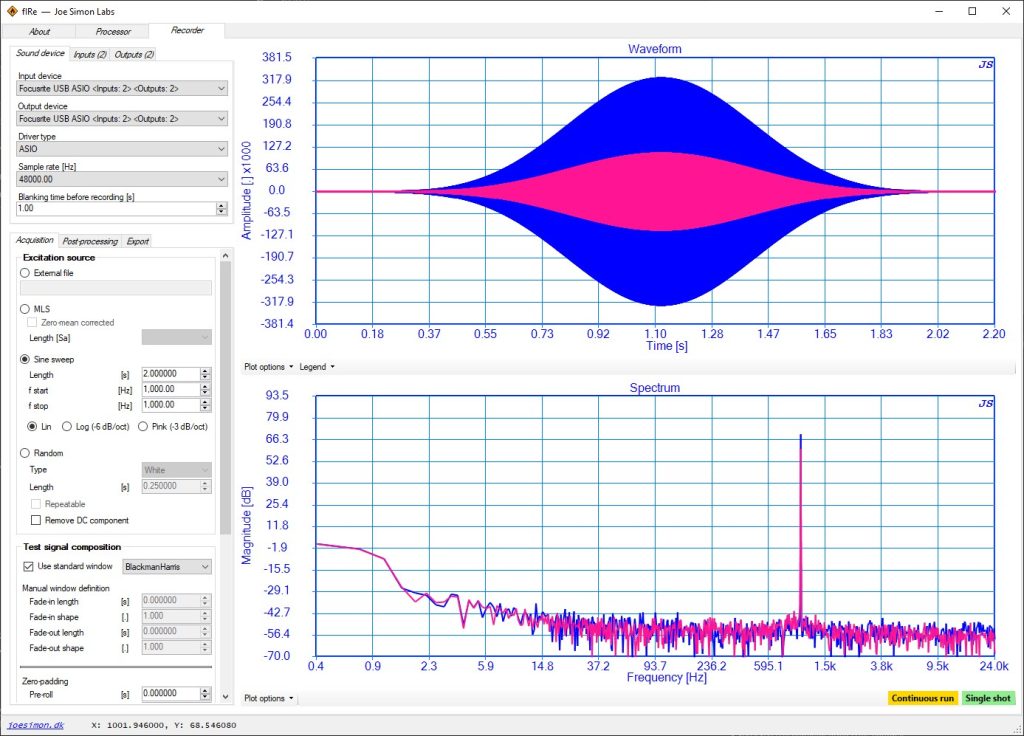
fIReLab
fIReLab is a measurement and signal-processing environment I developed to streamline tasks related to linear system analysis, such as impulse-response measurement, deconvolution, and post-processing. It combines a real-time recorder and a processor into a single workflow, making it easy to generate test signals, capture system responses, and extract frequency- or time-domain characteristics.
From excitation to response — a fine tool for system measurement and analysis.
The tool supports both live measurements using audio interfaces (with ASIO support for low latency) and offline processing of recorded data. Its modular design allows for the construction of custom signal-processing chains, real-time visualization, and the use of standard audio file formats for interoperability. Although originally created for audio applications, fIReLab’s flexibility makes it useful for any task involving system identification, filter design, or acoustic and electronic measurement.
KimeraLab
KimeraLab is one of the centerpieces of my tube amplifier workshop, which helps me design and refine virtual amplifiers with ease and precision. With it, every underlying parameter of a simulated tube amp can be manipulated—biasing, tone stack, preamp dynamics, power-amp behavior, and more—in real time. As the artist plays through an ASIO-compatible interface, KimeraLab can continuously shape the amplifier’s sonic character, hearing the results instantly.
The system is versatile enough to match the behavior of many classic and modern tube amplifiers with accuracy. With a large range of meta-parameters, it serves as a research and development tool rather than a consumer product. Once the design is finalized, the model can be used as the basis for a digital algorithm or guide the construction of its analog equivalent.
